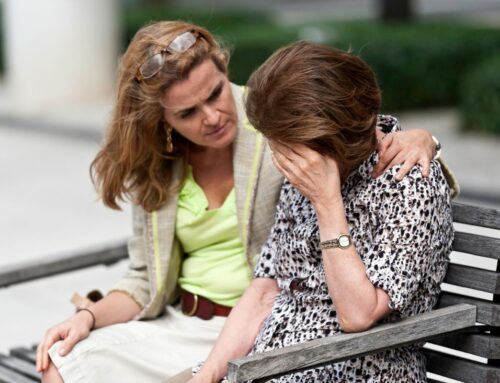People with obsessive-compulsive disorder (OCD) have persistent, upsetting thoughts (obsessions) and use rituals (compulsions) to control the anxiety these thoughts produce.
Most of the time, the rituals end up controlling them. For example, if people are obsessed with germs or dirt, they may develop a compulsion to wash their hands over and over again. If they develop an obsession with intruders, they may lock and re-lock their doors many times before going to bed. Being afraid of social embarrassment may prompt people with OCD to comb their hair compulsively in front of a mirror-sometimes they get “caught” in the mirror and can’t move away from it.
Performing such rituals is not pleasurable. At best, it produces temporary relief from the anxiety created by obsessive thoughts.
Obsessive-compulsive disorder is typically an anxiety disorder, but when an elderly person suffers from it, the condition could be related to Alzheimer’s disease or dementia.
Behaviors That Are Considered OCD
Healthy people also have rituals, such as checking to see if the stove is off several times before leaving the house. The difference is that people with OCD perform their rituals even though doing so interferes with daily life and they find the repetition distressing. Although most adults with OCD recognize that what they are doing is senseless, some may not realize that their behavior is out of the ordinary.
Obsessive compulsive behaviors are those that interfere with daily life. The person is unable to control the rituals.
Some common rituals are a need to repeatedly check things, touch things (especially in a particular sequence), or count things. Some common obsessions include having frequent thoughts of violence and harming loved ones, persistently thinking about performing sexual acts the person dislikes, or having thoughts that are prohibited by religious beliefs.
People with OCD may also be preoccupied with order and symmetry, have difficulty throwing things out (so they accumulate), or hoard unneeded items.
How Common is OCD?
OCD affects about 2.2 million American adults, and the problem can be accompanied by eating disorders, other anxiety disorders, or depression. It strikes men and women in roughly equal numbers and usually appears in childhood, adolescence, or early adulthood. One-third of adults with OCD develop symptoms as children, and research indicates that OCD might run in families. The course of the disease is quite varied. Symptoms may come and go, ease over time, or get worse.
If OCD becomes severe, it can keep a person from working or carrying out normal responsibilities at home. People with OCD may try to help themselves by avoiding situations that trigger their obsessions, or they may use alcohol or drugs to calm themselves.
Treatments for OCD
OCD is treated with therapy and medication. OCD usually responds well to treatment with certain medications and/or exposure-based psychotherapy, in which people face situations that cause fear or anxiety and become less sensitive (desensitized) to them.
Antidepressants are sometimes used in conjunction with therapy for the treatment of obsessive-compulsive disorder.
Because OCD often causes problems in family life and social adjustment, your doctor may recommend family therapy, which promotes an understanding of the disorder and can help reduce family conflicts.






